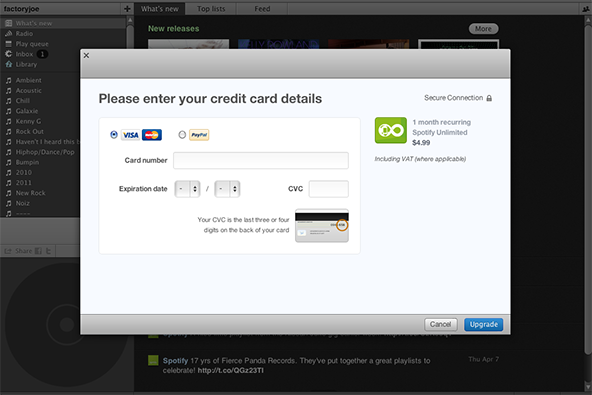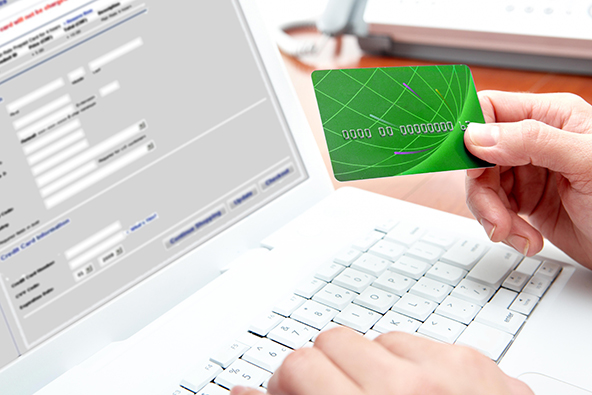How Mobile Payments Should Be Done: Apple’s iBeacon vs. NFC
![]()
Mobile payment providers and promoters thrive on hype. So new and untested are the technologies that power the various m-payment platforms that you can get away with saying pretty much anything about your service, as you can be fairly confident that there would not be enough data for an independent observer to verify or disprove your claims.
There are many examples of absurd statements that have been made about a mobile payment service and some of them I’ve covered on this blog. I have many favorites, including LevelUp’s open invitation for merchants to join the “Interchange Zero revolution and stop paying processing fees forever”. OK, I admit to being particularly partial to this one, mostly because the LevelUp revolutionaries have managed to achieve the enviable feat of being extravagantly inane and outrageously misleading all at the same time.
But every now and then someone would try to actually peer through the PR haze and into the essence of some mobile payment product or other. Well, that is precisely what the good people over at Pyrim Technologies, in collaboration with Mobile Payments Today and Retail Customer Experience, have done in a new paper (registration required), in which they have tested the proposition that Apple’s iBeacon is about to consign the NFC technology and the platforms built on it to irrelevance.
The researchers are quick to note that comparing the Bluetooth Low Energy (BLE) technology, on which iBeacon is built, to NFC is like “comparing a lighthouse (one way communications) to a telephone (two way communications)”, but nevertheless dutifully proceed to examine how the two technologies measure up. Let’s take a look at their findings, particularly as they relate to mobile payments.
BLE vs. NFC
So here is how the two examined mobile payment models work in the real world:
1. The BLE model. Upon entering a store, a consumer’s mobile payment app would sense a BLE transceiver, when operating in a beacon mode. The app would then respond by passively “checking-in” to alert the retailer’s point-of-sale (POS) system of the consumer’s presence. At checkout, the consumer would ask the merchant to post the sale to her ?ámobile payment account, which is visible on the merchant’s POS terminal. The merchant verifies the consumer’s identity and completes the transaction.
2. The NFC model. Upon checkout, the consumer would tell the merchant that she wishes to pay for the sale via credit card. The consumer then opens her mobile wallet app, selects the desired card (if such an option is present) and then taps her smartphone on the retailer’s POS terminal. The consumer’s payment credentials are automatically retrieved from the smartphone’s Secure Element (a protected area of memory) and transmitted securely via NFC to the payment terminal.
The difference between the two approaches, the authors note, is that whereas with BLE it is the consumer’s location that facilitates the engagement, with NFC it is the consumer’s response to a call-to-action that does it. Neither technique is superior, they proceed, as both have their respective merits in specific circumstances.
But they go further than that. Retailers, we are told, tend to slowly evolve their systems and capabilities and “rarely embrace revolutionary technologies that require a wholesale change of systems, processes and methods”. I agree. Their conclusion:
BLE-related mobile wallet / payment solutions, although intriguing in theory, fall apart in practice — except perhaps for all but the smallest retailers — because it demands more comprehensive change. NFC-enabled mobile wallets / payments, on the other hand, largely build upon a retailer’s existing investments while adding new value to both the retailer and to the shopper.
This, however, is not to say that BLE has no place in mobile wallets / payments. In fact, BLE and NFC can form a unified solution that creates synergies that, in some cases, neither one could achieve alone.
So, the world is big enough for the two technologies to coexist, as they serve two different purposes:
1. BLE, like a lighthouse, is used to call a mobile app’s attention to its current surroundings so that it may initiate a pre-defined action appropriate to the given location.
2. NFC, like a telephone, is used to facilitate a one-to-one, data-oriented communication session between a person and a thing or between two NFC-equipped individuals.
The authors even manage to find a way for the two technologies to be used together, “to create a collaborative application”:
A consumer enters a retailer. Their BLE-equipped smartphone senses a signal emanating from an in-store BLE transmitter. The consumer’s smartphone automatically employs the operating system’s BLE extension (iBeacon if it’s an iOS7 device) to evaluate the transmitter’s device ID so that it may execute the appropriate action. The ID results in a prompt to the consumer’s smartphone to display a notification that they have an offer from the retailer.
The consumer removes the smartphone from their pocket and acknowledges the notification on the screen. They then choose an option on the now-visible offer to save a coupon to their mobile wallet. Once saved, they shop, select the promoted item from the store shelf and use their phone to tap on its NFC-equipped shelf tag for additional savings.
Once satisfied with their selection, the consumer puts the item in their basket and continues shopping. They soon pass a digital sign advertising another product that catches their attention. They tap their phone on the NFC tag affixed to the digital sign and receive detailed information about the product plus a coupon for its purchase. They then select the product from the shelf, save the coupon in their mobile wallet and then proceed to checkout.
The checkout clerk rings up the purchases and then redeems the mobile coupons by scanning the coupons’ embedded barcodes. Once the sale is complete, the consumer selects the appropriate payment card from their mobile wallet, and then touches their phone to the retailer’s payment terminal. The consumer’s payment credentials are then securely transmitted to the payment terminal via NFC and the payment transaction is then sent to the payment processor for approval.
Once approved, the sale is complete and the consumer leaves the building having utilized both BLE and NFC wireless communications. Before he / she exits the premises, however, the consumer stops at a soft drink machine by the door, selects a beverage and then uses their NFC-enabled phone to pay for the purchase with just a tap of the phone on the vending machine. He / she is then credited points for the purchase, which can be monitored via his / her mobile wallet. The consumer leaves the building with their items.
So there is something for everyone. The authors have produced an infographic to illustrate their findings. Here it is:
![]()
Image credit: MobilePaymentsToday.com.



“Retailers, we are told, tend to slowly evolve their systems and capabilities and ?Ç£rarely embrace revolutionary technologies that require a wholesale change of systems, processes and methods?Ç¥. I agree. ”
I beg to differ. I think NFC is more revolutionary, simply because it is so scarce (and will remain unless Apple adopts) and one had to be a dedicated gadget geek to find an NFC compatible phone with a Secure Element. Worse, you need to get it swapped out and even pay for it. To add insult to injury, one can then only use it at a terminal with PayPass etc.
Compared to this every phone has BLE (at least for the past two years, and for Apple it goes back to the 4S), and once activated, it will just work. I would say the use case for BLE is likely to get mass adoption.
Revolutions often sneak up on people, this is why Apple plays the long game.
NFC vs BLE, NFC is loosing support from Android Phones maker
Market Trend of NFC and BLE supported by Android Phones manufacturers
I am a big a big fan of BLE like Steve Jobs.
Those bet on NFC will win in the payment market will be sad in the market trend.
Studied conducted on Nov. 18th, 2016, we found on BLE 4.1+ is taking off while NFC is loosing sight in the market trend of Android smart phones especially low cost smart phones with price under US$ 204.
source from https://goo.gl/kYqUwR or http://lite.ibonus.net/blog